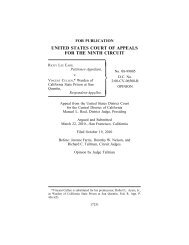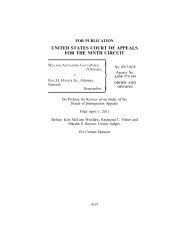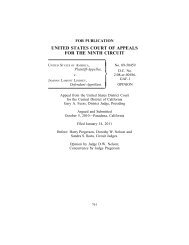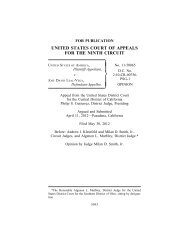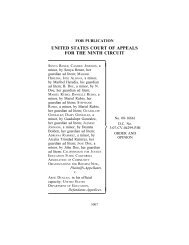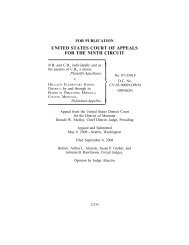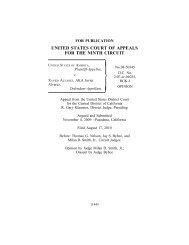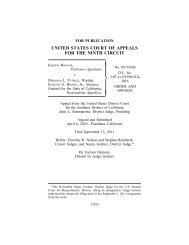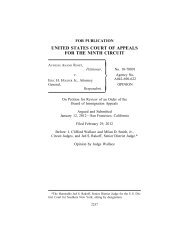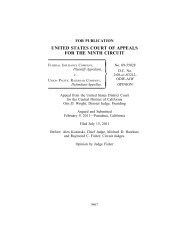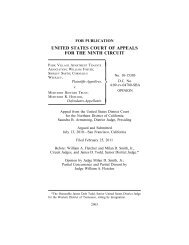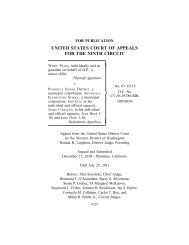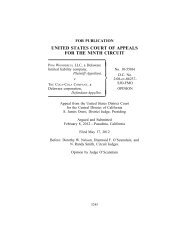olakunle oshodi v. eric h. holder jr. - Ninth Circuit Court of Appeals
olakunle oshodi v. eric h. holder jr. - Ninth Circuit Court of Appeals
olakunle oshodi v. eric h. holder jr. - Ninth Circuit Court of Appeals
Create successful ePaper yourself
Turn your PDF publications into a flip-book with our unique Google optimized e-Paper software.
ditions; a Nigerian newspaper article identifying Oshodi as an<br />
opponent to the current regime; and the medical and psychological<br />
reports.<br />
The standards for asylum and relief under the CAT “are<br />
distinct and should not be conflated.” Farah v. Ashcr<strong>of</strong>t, 348<br />
F.3d 1153, 1157 (9th Cir. 2003). Under the CAT, a<br />
“[p]etitioner must establish that it is more likely than not that<br />
he would be tortured if returned to the proposed country <strong>of</strong><br />
removal.” Soriano v. Holder, 569 F.3d 1162, 1167 (9th Cir.<br />
2009) (citation omitted).<br />
[9] The IJ specifically addressed Oshodi’s CAT claim,<br />
including a review <strong>of</strong> Pr<strong>of</strong>essor Mitchell’s testimony and<br />
Nigeria’s country conditions. Articulating the appropriate<br />
standard <strong>of</strong> pro<strong>of</strong>, the IJ concluded that “although there may<br />
be a possibility <strong>of</strong> torture, [the IJ did] not find that the evidence<br />
shows that it is more likely than not.” On appeal, the<br />
BIA need only “provide a comprehensible reason for its decision<br />
. . .” Ghaly, 58 F.3d at 1430. The BIA incorporated the<br />
IJ’s findings and concluded that Oshodi did not present “any<br />
persuasive arguments on appeal as to why [the BIA] should<br />
reverse the [IJ] . . .” Therefore, we determine that the BIA<br />
decision, which incorporated the IJ’s findings, provided a sufficiently<br />
comprehensible explanation for denial <strong>of</strong> relief under<br />
the CAT, with its attendant higher burden <strong>of</strong> pro<strong>of</strong>. See Soriano,<br />
569 F.3d at 1167; see also Malkandi, 576 F.3d at 917<br />
(approving incorporation <strong>of</strong> the IJ’s findings).<br />
IV. CONCLUSION<br />
OSHODI v. HOLDER<br />
751<br />
The BIA sufficiently complied with our mandate because<br />
it considered the REAL ID Act’s impact on the IJ’s finding<br />
that Oshodi’s claims were not sufficiently corroborated. Even<br />
assuming that the REAL ID Act mandates notice that corroborating<br />
evidence will be required, such notice was provided<br />
in this case. The IJ’s adverse credibility determination was



